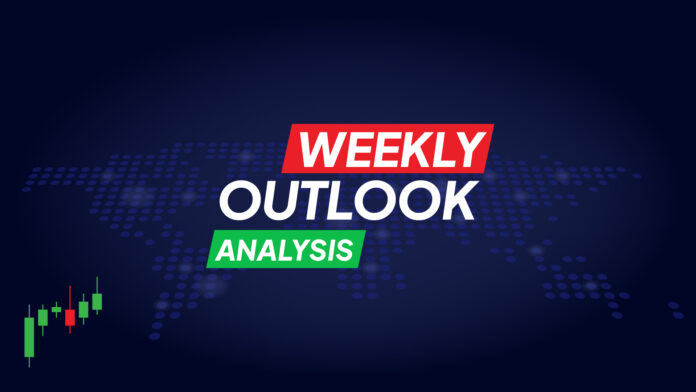Key points to watch out for:
- The Non-Farm Payrolls report and advance European CPI will condition rate cut forecasts.
- ISM PMI indices will also be relevant for the Fed and the outlook for the US dollar.
- Canadian employment and Chinese PMIs are also on the economic calendar
The Federal Reserve reinforces its view
The March monetary policy meetings reinforced the likelihood of central banks beginning to cut interest rates by June.However, there are still some doubts about whether inflation is on a downward path especially in the United States.
Despite the FOMC’s estimate of three rate cuts by 2024, the committee members displayed increased hesitance to commit to a specific rate cut schedule. Inflation on U.S. soil appears to have stalled at 3.0%, while the labor market remains tight.
Concern arises that a premature rate cut might reignite inflationary pressures. The Fed believes that its credibility would suffer more from maintaining a tight policy longer than necessary.
There are no established market perceptions of a clear baseline for a soft landing, meaning that any shifts in this outlook could end Wall Street’s rally and potentially strengthen the U.S. dollar. Consequently, investors’ best hope is that the new data will be mixed.
Could the U.S. labor market cool?
The labor market has been another issue that has kept the Fed on edge. Although signs indicate that the market is cooling, the Fed still fears overheating. Notably, the economic slowdown was pronounced last month as the unemployment rate increased to 3.9% and annual wage growth slowed to 4.3%.
Nonetheless, employment growth remained strong, with non-farm payrolls expanding by 275,000 jobs. The March forecast anticipates the creation of 198,000 new jobs, an unemployment rate steady at 3.9%, and a slowdown in average hourly wage growth to 4.1% annually.
The data to be released on Friday, April 5 will be preceded by PMI and ISM data. By Monday, April 1 of this week, the manufacturing PMI will be released and on Wednesday, April 3, it will be the turn of services. The former is expected to show signs of slight improvement in March, but the latter is expected to show signs of a pullback. On Tuesday, April 2, factory orders and JOLTS job openings will be released, and on Wednesday, April 3, the ADP employment report will be released.
Should the numbers be positive, and especially if the NFP numbers are better than expected, bets for a rate cut would be countered, which would be a further boost for the dollar.
Eurozone CPI in the spotlight
While the Federal Reserve is worried about inflation being above the 2% target, the European Central Bank (ECB) has fared better. Headline CPI declined to 2.6% in the second month of this year and is expected to continue falling to 2.5% in March. Core CPI, which does not take into account volatile items such as food, tobacco, energy and alcohol, is expected to fall to 3.0%.
Europe’s monetary policymakers have shown in recent days that they are advocating a rate cut for the June meeting. A downside surprise is likely to support such a move, putting pressure on the euro, although stronger-than-expected readings could limit the chances of a June cut.
However, any boost to the euro from stronger numbers is likely to be limited and short-lived, as one month’s data is not seen as a very striking change in expectations when there is a larger consensus within the ECB.
On the data front, continental unemployment rates will be released on Wednesday, April 3, followed by producer prices on Thursday, April 4, and on Friday, April 5, it will be the turn of German industrial orders and industrial production in France.
Canadian employment statistics
In Canada, the highlight will be the March employment statistics, which will be released on Friday, April 5. The Bank of Canada (BoC) is another bank on course to begin its easing cycle for June. A cut became more likely after inflation showed signs of weakness more than expected during the month of February, coming in below 3.0%. The labor market has also slowed recently, with the unemployment rate rising to 5.8%.
Employment probably increased slightly, by 20,000, in March, which is unlikely to have a major impact on the chances of a rate cut, barring a miss.
The Canadian dollar has continued a downward trend against the U.S. dollar in 2024 as data from U.S. soil has mostly been solid. Consequently, much of this week’s Friday reaction will be driven by US dollar dynamics when the Non-Farm Payrolls (NFP) report is released.
Bank of Japan survey and China PMIs
Estimates of a Fed rate cut will also be vital for the Japanese yen, which has seen it lose ground following the Bank of Japan’s rate hike along with speculation about possible intervention.
Investors are unsure whether the BOJ is in the ideal context to tighten monetary policy any time soon after the massive measures taken at the March meeting. It is likely that accommodative policy will be used for a longer period of time to support the economy and ensure that inflation does not fall back below 2%. However, the quarterly survey to be released on Monday, April 1 by Tankan may show support for the Japanese currency if it signals growing optimism among Japanese companies. Also not to be overlooked are the household spending figures due on Friday, April 5.
On the other hand, China’s PMI figures will take center stage on Monday, April 1. The official manufacturing PMI is expected to increase to 49.9.
Signs that the recovery in the world’s leading industrial powerhouse is gaining momentum could cause the mood to lift early in the week, when volumes are expected to be light due to the extended Easter weekend in many markets.



